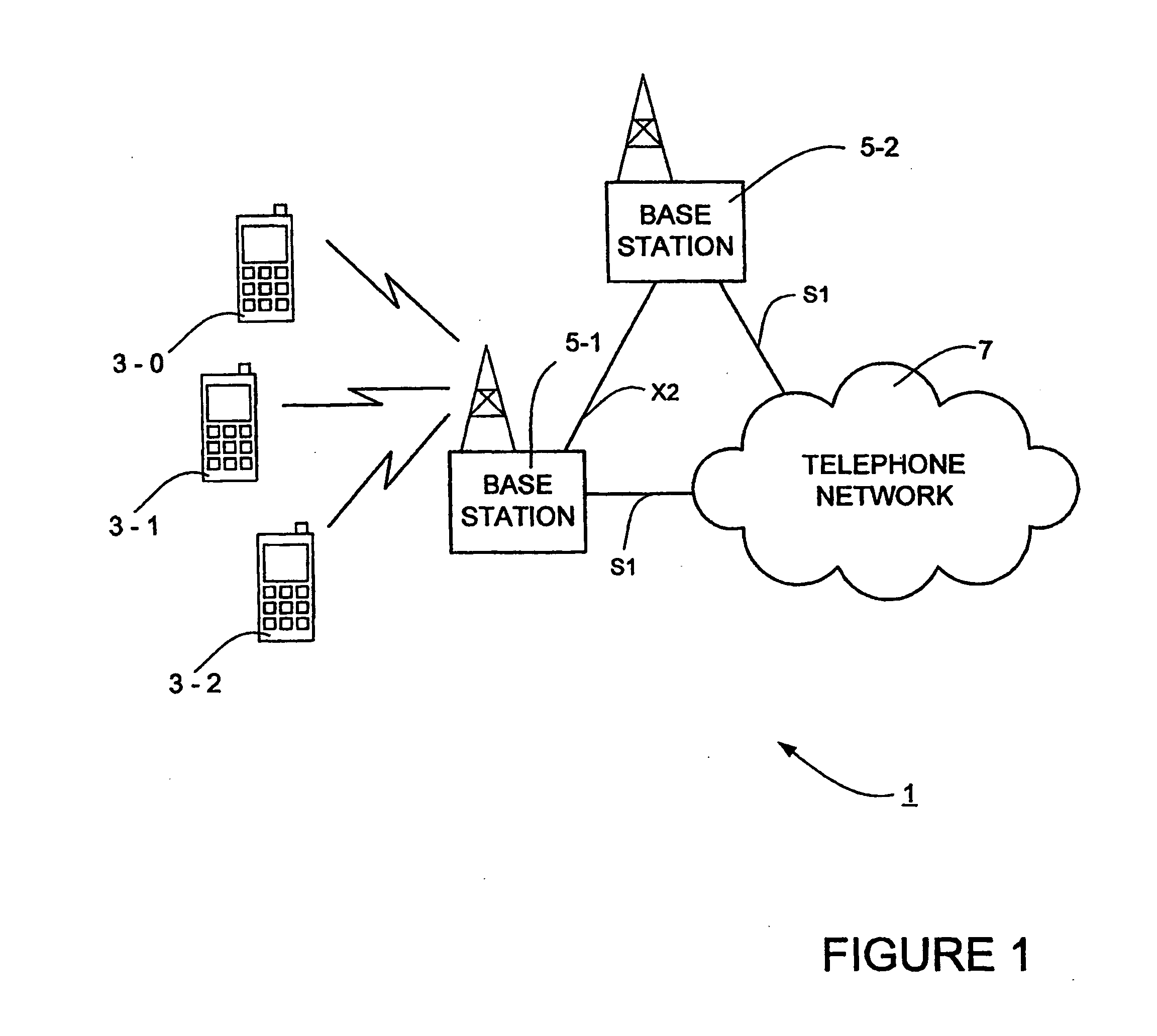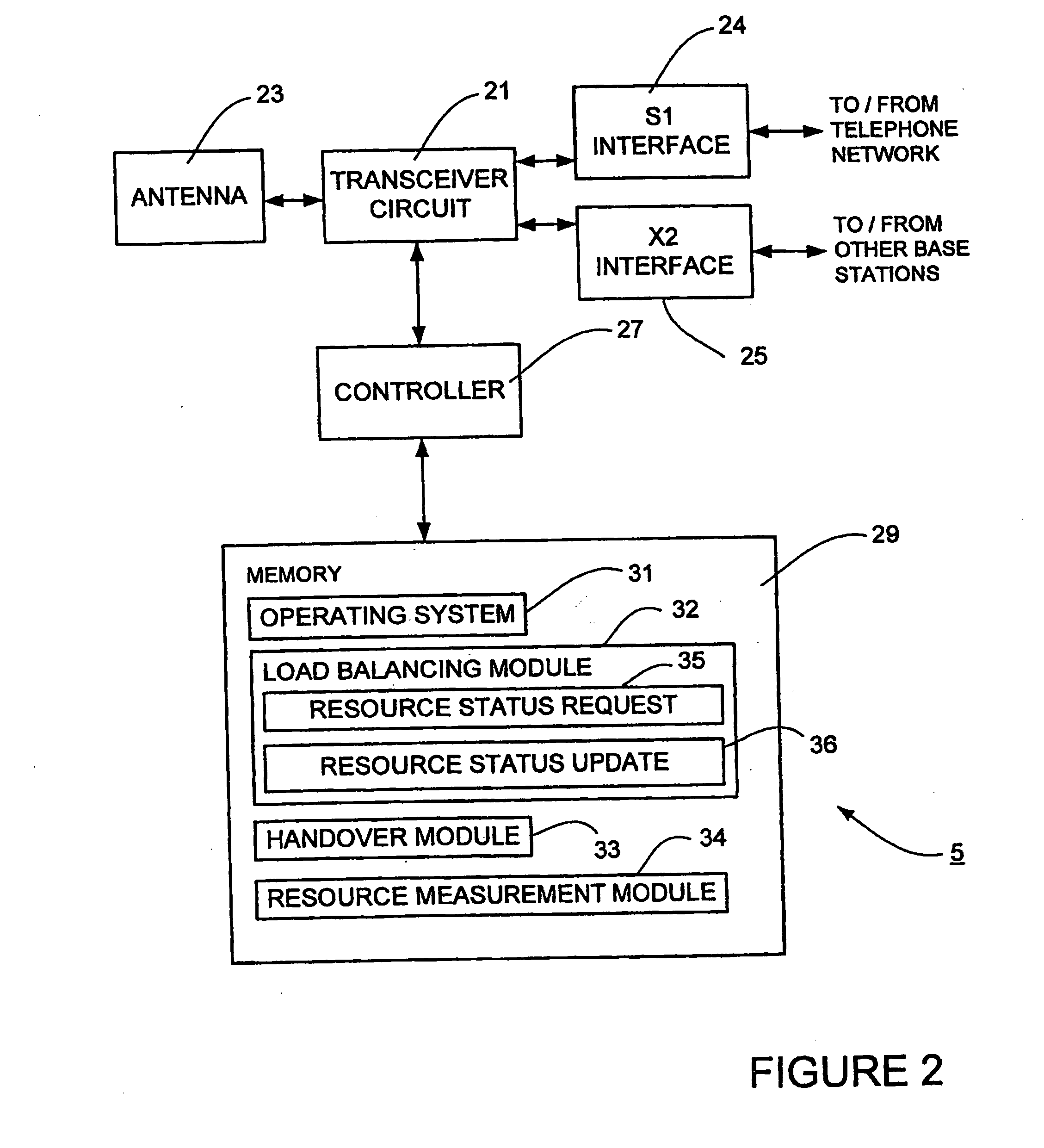Signalling of resource status information between base stations for load balancing
a resource status and load balancing technology, applied in the field of mobile telecommunication networks, can solve the problem that the information between the base stations for load balancing has yet to be defined
- Summary
- Abstract
- Description
- Claims
- Application Information
AI Technical Summary
Benefits of technology
Problems solved by technology
Method used
Image
Examples
Embodiment Construction
Overview
[0036]FIG. 1 schematically illustrates a mobile (cellular) telecommunication system 1 in which users of mobile telephones (MT) 3-0, 3-1, and 3-2 can communicate with other users (not shown) via one of the base stations 5-1 or 5-2 and a telephone network 7. A number of uplink and downlink communications resources (sub-carriers, time slots etc) are available for the wireless link between the mobile telephones 3 and the base stations 5. In this exemplary embodiment, the base stations 5 allocate downlink resources to each mobile telephone 3 depending on the amount of data to be sent to the mobile telephone 3. Similarly, the base stations 5 allocate uplink resources to each mobile telephone 3 depending on the amount and type of data the mobile telephone 3 has to send to the base station 5.
[0037]Each of the Base stations 5 includes an “S1” interface for interfacing with the core telephone network 7 and an “X2” interface for interfacing with neighbouring base stations 5. Load balan...
PUM
 Login to View More
Login to View More Abstract
Description
Claims
Application Information
 Login to View More
Login to View More - R&D
- Intellectual Property
- Life Sciences
- Materials
- Tech Scout
- Unparalleled Data Quality
- Higher Quality Content
- 60% Fewer Hallucinations
Browse by: Latest US Patents, China's latest patents, Technical Efficacy Thesaurus, Application Domain, Technology Topic, Popular Technical Reports.
© 2025 PatSnap. All rights reserved.Legal|Privacy policy|Modern Slavery Act Transparency Statement|Sitemap|About US| Contact US: help@patsnap.com



